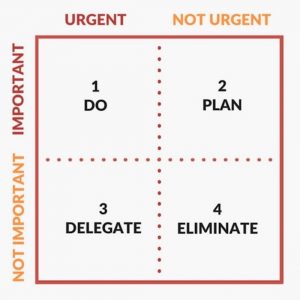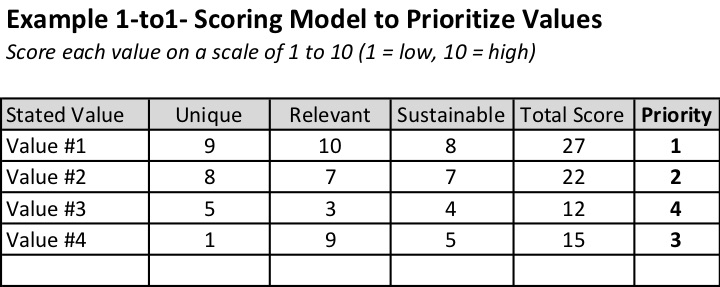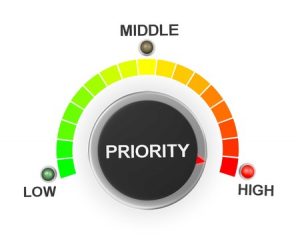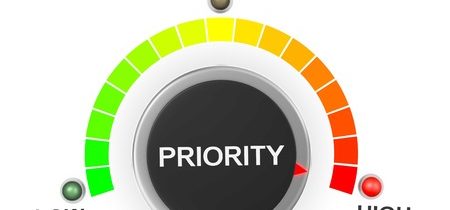Different Models to Prioritize. Don’t Forget Your Values.
Lately I’ve been fascinated with the whole topic of prioritization. Selecting your values is critically important. But to not prioritize them is like putting up a fence to keep your dog in the yard and then leaving the gate open.
I find that everyone prioritizes at least some parts of their life – such as choosing to stop work to eat lunch, versus choosing to work through lunch. Different people have different priorities. Yet, how many fail to prioritize the important things, such as their values.
The same is true in business.
This may explain why business leaders sometimes make decisions that are incongruent with a particular value. For example, a business leader might agree to a special deal with a one customer that is not offered to other customers, even though Fairness (or Transparency) is a stated value.
Why does this happen? Because the company also claims the value of Results (or Growth). In this case, even though the special deal did not support the one value (Fairness), it did satisfy another value (Results). On the surface it seems quite logical.
The question is: Which value has higher priority?
When it comes to prioritizing what’s important in business, I’m intrigued with the various tools available today. Let’s explore 3 of them, and the possible connection with values.
3 Tools to Prioritize
Here are 3 powerful tools that help business leaders in prioritizing what’s important.
1) Urgent-Important Matrix
 The Eisenhower Matrix, commonly referred to as the Urgent-Important Matrix, is a tool that was developed by Dwight D. Eisenhower, the 34th President of the United States, when he was a general in the U.S. Army in World War II.
The Eisenhower Matrix, commonly referred to as the Urgent-Important Matrix, is a tool that was developed by Dwight D. Eisenhower, the 34th President of the United States, when he was a general in the U.S. Army in World War II.
This matrix is a great tool to help leaders decide on and prioritize tasks based on urgency and importance, sorting out less urgent and important tasks which should be either delegated or not done at all.
Stephen Covey made this model popular in his book, The 7 Habits of Highly Effective People.
This tool can also be used in conjunction with stated values to determine what is important vs. not important. For example, assume your stated values are Agility, Teamwork, and Results. As you assess a particular issue, such as asking the team to create a new marketing campaign, if it supports the values of agility, teamwork, and results, then it’s classified as important. But if it does not support the values, then it’s not important.
However, values would be of little use in helping determine if an issue is urgent vs. not urgent.
2) Stop-Start-More-Less Grid
 A useful tool that was popularized by the book Blue Ocean Strategy
A useful tool that was popularized by the book Blue Ocean Strategy, is the Stop-Start-More-Less grid. In business, almost every activity consumes time, energy and other resources. To help prioritize activities and areas of focus, this tool can be hugely valuable.
After writing down a list of every activity you do, or plan to do, assign each activity to one of the 4 options: Stop Doing; Start Doing; Do More, or Do Less. Then group the various activities by area and assess how realistic the assessment is. Note: you can’t list an activity under Start Doing if you do not have something else listed under the Stop Doing category. The same is true for Do More and the need to have items listed under Do Less.
Successful leaders learn to balance their list of activities across the four sections of this grid.
Here also, stated values can be useful as you assign your activities to a specific category. You should start doing and do more of those things that support your values. And you should stop doing and do less of those things that do not support your values.
However, this tool does not help you determine which value has higher priority over another.
3) A 1-to-10 Scoring Model
A simple 1-to-10 scoring model (where 1 is top priority, then 2, and so on) can be used in many different ways. For instance, you can use it to:
- Rank the tasks you need to accomplish today
- Determine the importance level of issues to resolve, or customers to call
- Highlight the priority order to fix product problems
- List the winners of a sales contest
This scoring model can also be useful to prioritize your values.
For some, they find it easy to prioritize their values knowing their #1 value is truly #1, their #2 value is truly #2, and so on. But for others it’s not that straightforward.
Is Teamwork more important that Accountability?
Should Fun be higher or lower priority than Creativity?
Assuming you have already selected your list of values (if not, use my free resource to do this first), another way to use the 1-to-10 scoring model is to score your values against specific criteria and then rank them based on the total scores.
Here, I recommend using the criteria (or Values Test) I outline in my eBook – where differentiating values should be Unique, Relevant, and Sustainable.
A simple spreadsheet evaluation might look something like this:

This is a great way to quickly prioritize your values and determine your most important value vs. lesser important values.
Why is it important to do this? To mange decisions through a values conflict.
In business – and life – we are constantly dealing with a conflict of values.
- Should you pursue a special deal for this one customer?
- Are you truly ready to start a new marketing campaign?
- Should you work through lunch?
Bottom line: Prioritizing matters. It helps you make better decisions. Prioritizing also helps those you work with make better decisions and ensure they are aligned with the stated values. It keeps everyone playing in the right sandbox, the one you have determined will lead to competitive advantage!









